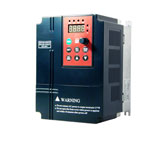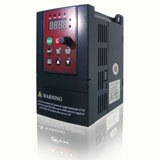VFD with DC injection braking
I do prefer to use a vfd with DC injection braking or dc-hold functionality, but if you're stuck with "across-the-line" controls, all you need is a few aux contacts on your primary starter, a variable time delay relay, a two pole contactor (preferably with at least one aux contact), and a single phase rectifier (or four appropriately sized diodes.)
If you do much work on older machines, you will find a lot of these types of circuits, and also find they work pretty well. Obviously, they are not ideal for PM motors or systems with large overhung loads, but they tend to require less maintenance than mechanical brakes when properly installed.
Oh, and ideally one replaces the variable time delay relay with a preset td relay once R and D is complete, but as these are traditionally mercury displacement relays, that can cause ROHS headaches, but there are other solutions.
In one drive system I had seen single phase motor electrical braking by using permanent magnet rotating on the axis with a small stator coil encompassment. The device was quite small, (acting more like a sync generator) was measuring the speed. For braking, the stator terminals of this device were shorted, bring the motor to a halt.
Setting aside the VFD, mechanical and safety options and concerns: A full wave bridge rectifier on the 230 volt feed will provide ~180 vdc for stopping the motor. You will have to have a solid state relay that you can pulse. Otherwise you can break couplings, etc. due to the breaking force. The caveat is the captive start.
For this please pay attention to local safety rules which are most of the time very limited and technical solution quite clear according what will be put up or down. Most of the time you have very special cycle that make you may control the braking time and not be too hard for the passenger. You must control when it will stop in order that people don't fall. To use a DC break is quite easy, you have lot of brake supplier that provide the brake with a rectifier included, but this control only the brake and not how you'll use it. For more detail pay attention to local rules for this kind of specific application. Better to use a drive that will control the brake and torque of the motor when he will be release, through an encoder.
If you do much work on older machines, you will find a lot of these types of circuits, and also find they work pretty well. Obviously, they are not ideal for PM motors or systems with large overhung loads, but they tend to require less maintenance than mechanical brakes when properly installed.
Oh, and ideally one replaces the variable time delay relay with a preset td relay once R and D is complete, but as these are traditionally mercury displacement relays, that can cause ROHS headaches, but there are other solutions.
In one drive system I had seen single phase motor electrical braking by using permanent magnet rotating on the axis with a small stator coil encompassment. The device was quite small, (acting more like a sync generator) was measuring the speed. For braking, the stator terminals of this device were shorted, bring the motor to a halt.
Setting aside the VFD, mechanical and safety options and concerns: A full wave bridge rectifier on the 230 volt feed will provide ~180 vdc for stopping the motor. You will have to have a solid state relay that you can pulse. Otherwise you can break couplings, etc. due to the breaking force. The caveat is the captive start.
For this please pay attention to local safety rules which are most of the time very limited and technical solution quite clear according what will be put up or down. Most of the time you have very special cycle that make you may control the braking time and not be too hard for the passenger. You must control when it will stop in order that people don't fall. To use a DC break is quite easy, you have lot of brake supplier that provide the brake with a rectifier included, but this control only the brake and not how you'll use it. For more detail pay attention to local rules for this kind of specific application. Better to use a drive that will control the brake and torque of the motor when he will be release, through an encoder.



